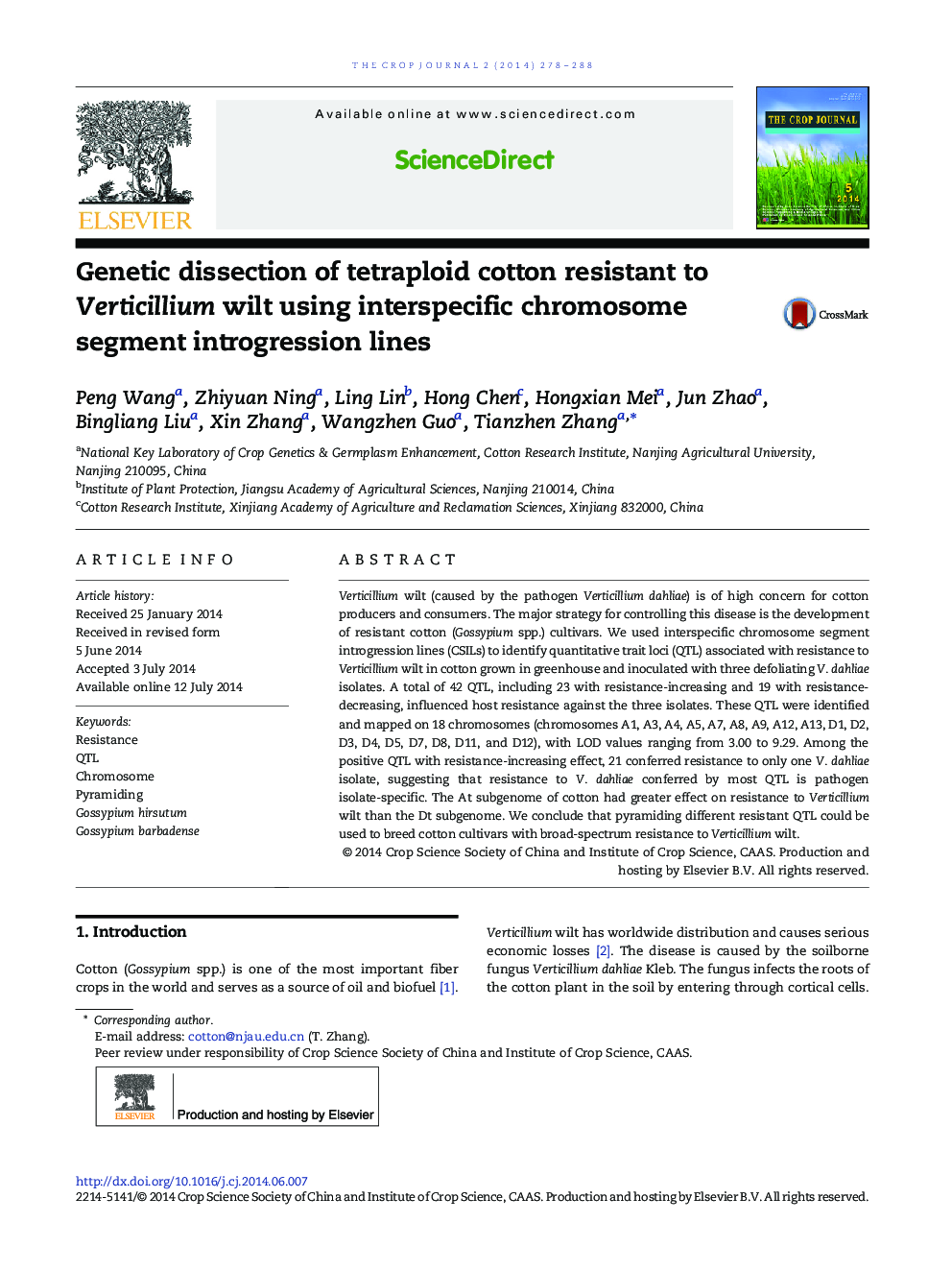| Article ID | Journal | Published Year | Pages | File Type |
|---|---|---|---|---|
| 2079510 | The Crop Journal | 2014 | 11 Pages |
Verticillium wilt (caused by the pathogen Verticillium dahliae) is of high concern for cotton producers and consumers. The major strategy for controlling this disease is the development of resistant cotton (Gossypium spp.) cultivars. We used interspecific chromosome segment introgression lines (CSILs) to identify quantitative trait loci (QTL) associated with resistance to Verticillium wilt in cotton grown in greenhouse and inoculated with three defoliating V. dahliae isolates. A total of 42 QTL, including 23 with resistance-increasing and 19 with resistance-decreasing, influenced host resistance against the three isolates. These QTL were identified and mapped on 18 chromosomes (chromosomes A1, A3, A4, A5, A7, A8, A9, A12, A13, D1, D2, D3, D4, D5, D7, D8, D11, and D12), with LOD values ranging from 3.00 to 9.29. Among the positive QTL with resistance-increasing effect, 21 conferred resistance to only one V. dahliae isolate, suggesting that resistance to V. dahliae conferred by most QTL is pathogen isolate-specific. The At subgenome of cotton had greater effect on resistance to Verticillium wilt than the Dt subgenome. We conclude that pyramiding different resistant QTL could be used to breed cotton cultivars with broad-spectrum resistance to Verticillium wilt.
